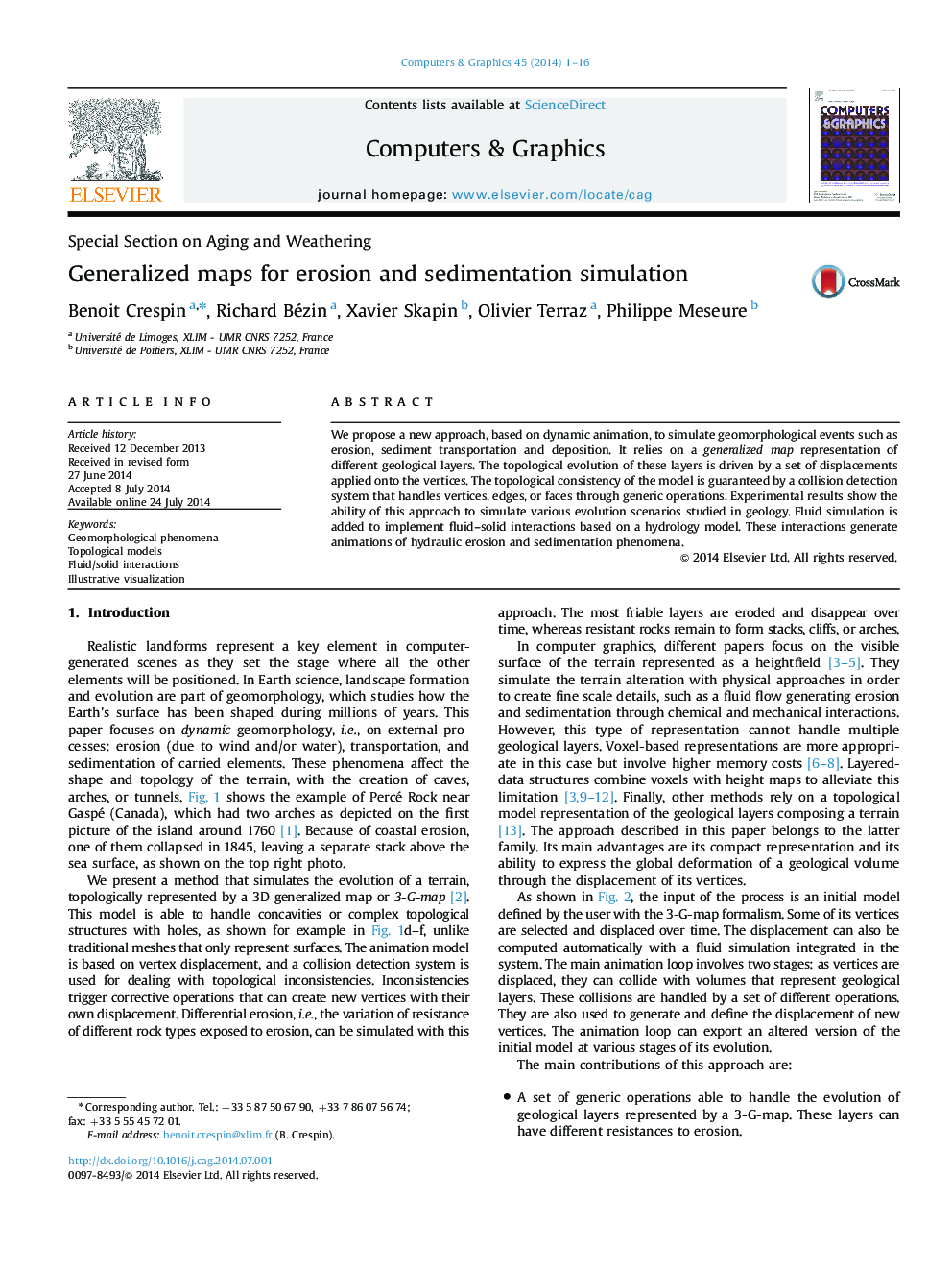| Article ID | Journal | Published Year | Pages | File Type |
|---|---|---|---|---|
| 441462 | Computers & Graphics | 2014 | 16 Pages |
•Our system handles the evolution of geological layers represented by a 3-G-map.•It implements differential erosion and sedimentation processes.•Evolution can be controlled through interactions with a fluid simulation.
We propose a new approach, based on dynamic animation, to simulate geomorphological events such as erosion, sediment transportation and deposition. It relies on a generalized map representation of different geological layers. The topological evolution of these layers is driven by a set of displacements applied onto the vertices. The topological consistency of the model is guaranteed by a collision detection system that handles vertices, edges, or faces through generic operations. Experimental results show the ability of this approach to simulate various evolution scenarios studied in geology. Fluid simulation is added to implement fluid–solid interactions based on a hydrology model. These interactions generate animations of hydraulic erosion and sedimentation phenomena.
Graphical abstractFigure optionsDownload full-size imageDownload high-quality image (183 K)Download as PowerPoint slide
